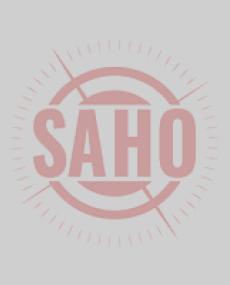
Roger Meintjes was born in Cape Town, Western Province (now Western Cape) in 1963.
Meintjes was very interested in photography and bought a second-hand enlarger advertised in the under-R20 column in one of the Cape newspapers. In 1985, Meintjes went to study at Michaelis School of Fine Arts at the University of Cape Town where he completed his BA Fine Art degree majoring in photography, in 1988.
After completing his degree, Meintjes worked as a freelance photographer. He was especially interested in documentary photography. Meintjes joined the photographic collective, Afrapix, in 1987. According to Meintjes, he joined Afrapix because it “provided a unique vehicle for circulating work, developing collaborative projects and learning from peers.” (Email interview with Meintjes, 2012 conducted by Bianca van Laun). He was especially impressed by the Afrapix photographers’ active engagement in exploring and developing ways to use their photography as a means to address political and social issues. This process initiated much thoughtful discussion and debate.
The diversity of the photographers brought together in the collective, as well as their common sense of purpose to address the injustices of the apartheid state, according to Meintjes provided a “rich learning context in which to shape one’s own practice.” (Email interview with Meintjes, 2012 conducted by Bianca van Laun). As a photographer and Afrapix member, Meintjes aimed to use his photography to highlight the socio-political environment in South Africa at the time but more particularly to illustrate people’s everyday struggles to lead a dignified life. In this way, Meintjes wished to provide a greater understanding of the mechanics of the apartheid state, particularly in terms of the overwhelming majority of White South Africans who had never entered a township and were oblivious to the way in which the majority of their fellow South Africans lived.
As a member of the collective, his work was included in exhibitions organised by the collective as well as in the 1989 publication, Beyond the Barricades in which his images contributed directly to the statement about popular resistance and state brutality in South Africa during the 1980s.
Besides these kinds of exclamatory images of direct and often violent action, during the period of 1986 to 1989, Meintjes also explored the everyday experience of subaltern migrant workers in the Cape Town township of Gugulethu. Meintjes stated that this project came about because he often spent time socialising with friends in shebeens in Khikhi, Gugulethu. Patrons who came to know Meintjes as a regular in the area began to invite him back to their ‘rooms’ and later also requested that he make portraits of them to be sent to families and loved ones in the Transkei or Ciskei (Eastern Province, now Eastern Cape). As a result, Meintjes’ photographs show the first camera recordings in this region of the hostel dwellers private realm, instead of focusing on the communal aspect of the space.
According to Meintjes, “This initial social and political engagement helped build my understanding of what was going on in the hostels and motivated me to record it. I was particularly taken by the everyday struggles for dignity in what were overwhelmingly oppressive circumstances. At the time, coverage of the struggle against apartheid focused primarily on mass action and prominent political figures. I saw a very different struggle in the hostels, one that was happening on a daily domestic level. I was deeply moved and inspired by these struggles and spent about 4-5 years documenting the hostel life in Khikhi.” (Interview with Meintjes, 2012). Owing to this determination to record the strategies that people used to survive under the apartheid state, Meintjes’ images speak to the everyday life of hostel inhabitants, to funerals, games, the joy of the birth of a child, initiation ceremonies, and how people attempted to decorate their small spaces to make of these a home.
Meintjes was later also approached by the Western Cape Hostel Dwellers Association to use his photographic skills to document the living conditions of migrant workers and hostel inhabitants. In photographing to aid in the Association’s struggle for improved living conditions, Meintjes sought also to encourage awareness and understanding between South Africa’s racially polarised communities.
The Khikhi hostel series was circulated internationally and, to a more limited extent, locally. Some of the images from this project were published in local and international media as well as in alternative ‘struggle publications’ including a literacy booklet aimed at hostel dwellers.
In 1990, Meintjes left the Afrapix collective and after the transition to a democratic government, he moved into the field of museums and curating. Interested in designing inclusive development and curatorial models, Meintjes was actively involved in projects at the then newly established Robben Island Museum where he led exhibition development between 1997 and 2003, and the Lajedos Site Museum in Cape Verde between 2005 and 2008. Since 2005, Meintjes has been actively involved in researching and developing learning technologies aimed at youth visiting community technology centres.
Meintjes is currently enrolled as a doctoral candidate in the Digital Media and Learning Group in the Computer Science Department of the University of Bremen. His research investigates the design and use of computational construction kits that combine digital technologies with craft materials and practice. These kits are aimed at enabling disadvantaged youth in informal learning centres to create usable interactive exhibits and games and thereby promote new forms of peer-to-peer learning.